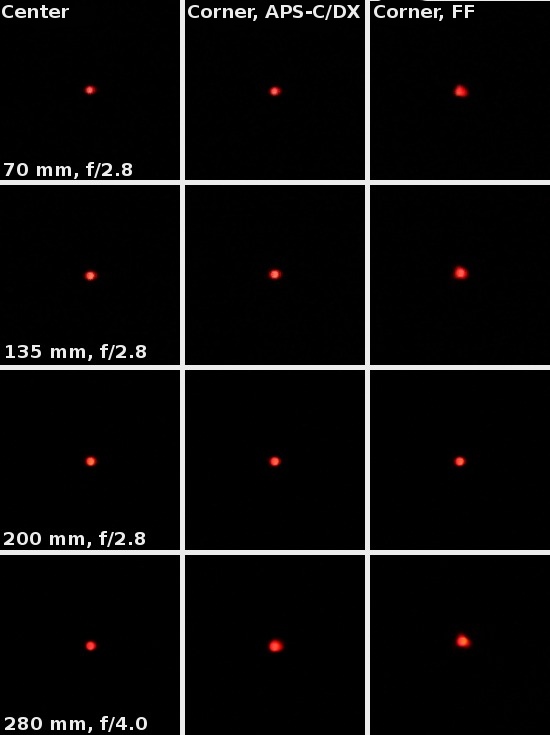Sigma 70-200 mm f/2.8 EX DG APO OS HSM
7. Coma and astigmatism
Please Support UsIf you enjoy our reviews and articles, and you want us to continue our work please, support our website by donating through PayPal. The funds are going to be used for paying our editorial team, renting servers, and equipping our testing studio; only that way we will be able to continue providing you interesting content for free. |
- - - - - - - - - - - - - - - - - - - - - - - - - - - - - - - - - - - - - - - - - - - - - - - -
The Sigma 70-200 mm OS corrects the coma very well. At 135-200 mm you can hardly notice any influence on the image of the diode and it is true for the APS-C/DX frame corner and full frame alike. Very slight coma can be noticed only after attaching the converter in the full frame corner at 70 mm so in a place where the resolution of a lens suffers the most.

We mentioned astigmatism in the chapter about the lens’s resolution. It has a noticeable growth tendency with the increase of the focal length and it increases sharply after attaching the converter. At 70 mm its value is still negligible amounting to just 2%. At 135 mm it reaches a not very bothersome but already visible level of 10%. At 200 mm its level is not much higher, because 11%, but here it features an unpleasant property of being visible even after a significant stopping down. However real problems start only after you put the converter on because then the astigmatism level rises to a high level of 21%.






